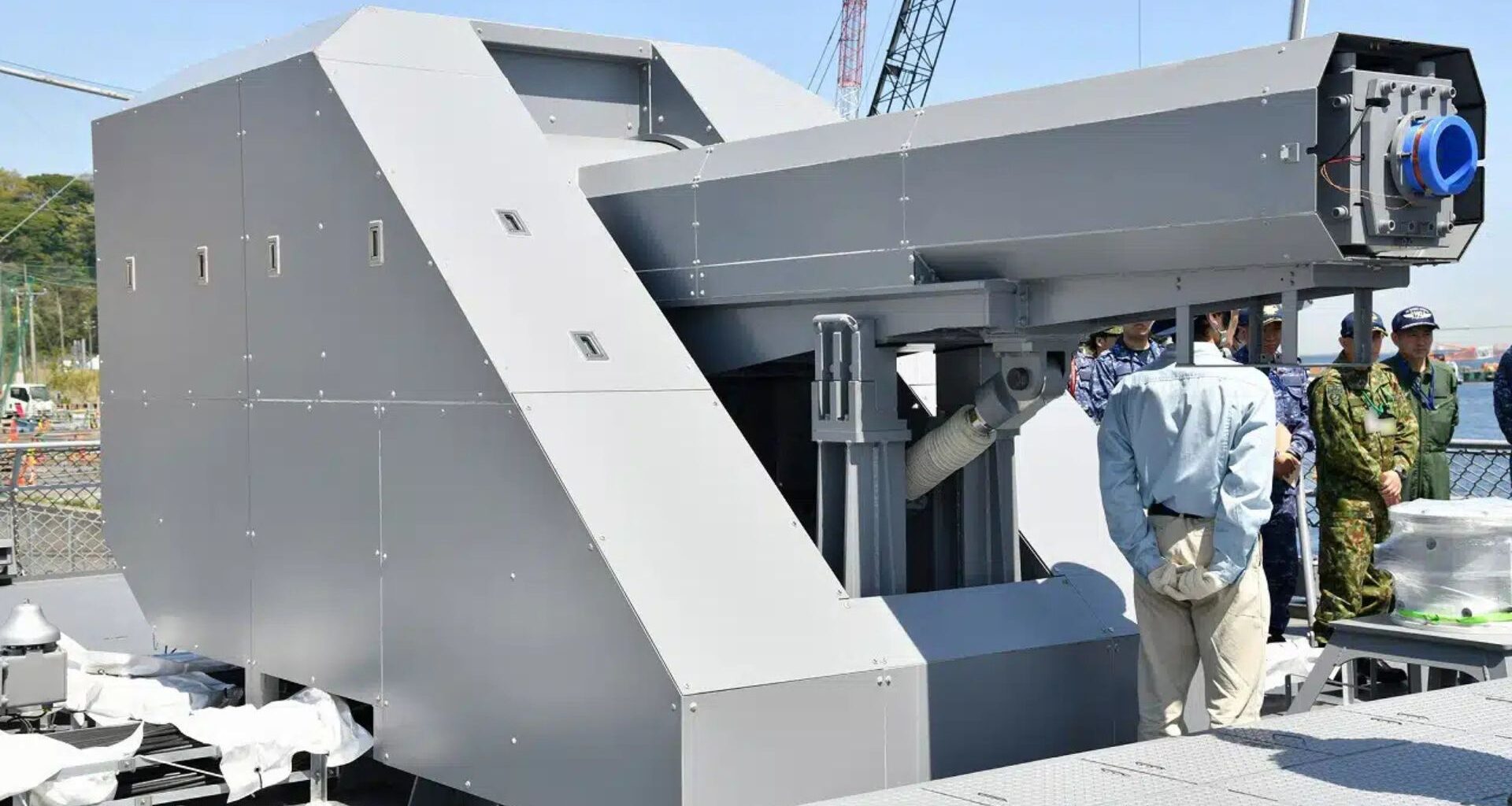Japan’s Maritime Self-Defense Force has shared new images of a railgun on the test ship JS Asuka. This development highlights Japan’s goals in directed-energy weapon technology.
This latest iteration, visibly more complete than previous prototypes, marks a material advance in Japan’s indigenous hypersonic weapons program.
Vice Admiral Omachi Katsushi, Commander of the Self-Defense Fleet (COMSDFLT), inspected Asuka, the JMSDF’s technology demonstrator operated by the Fleet Research and Development Command (FRDC).
The railgun is a product of the Acquisition, Technology & Logistics Agency (ATLA), with industrial support provided by Japan Steel Works, one of Japan’s premier naval gun manufacturers.
World’s first electromagnetic railgun
Japan’s railgun development formally began in 2016, with live-fire testing commencing in 2022.
Initial research prioritized two enduring technical challenges: projectile stability at hypersonic speeds and barrel wear mitigation.
Railguns use electric and magnetic fields to speed up projectiles, creating huge stresses on their internal parts.
This issue led to a halt in similar projects in the United States, which were eventually abandoned.
In contrast to the U.S. Navy’s abandoned railgun project, which ceased public development in 2021 after investing over $500 million, Japan’s program has remained publicly active.
According to Defense News, the American system suffered from severe barrel degradation after fewer than 30 firings.
While the classified continuity of the U.S. initiative remains speculative, Washington’s focus has publicly shifted to solid-state laser weapon systems, which have suffered from inconsistent field performance and limited operational readiness.
As mounted on Asuka, Japan’s current railgun prototype reportedly weighs eight metric tons and features a 6-meter-long barrel.
Open-source analysis, including Shephard Media reporting, suggests the system can launch 40mm steel projectiles weighing approximately 320 grams (0.7 pounds).
In tests conducted in 2018, the system achieved a muzzle velocity of approximately 2,230 meters per second (Mach 6.5), with plans to increase the charge energy from 5 megajoules (MJ) to a projected 20 MJ shortly.
Hypersonic speed
These kinetic characteristics would place the system among the most powerful of its kind globally.
Unlike traditional explosive ordnance, the railgun leverages sheer kinetic energy for destructive effect, firing inert projectiles at hypersonic velocities.
This makes it a cost-effective alternative to guided missiles in certain contexts.
Projectiles can be configured for multiple mission types, including anti-air fragmentation roles, an application suggested by Japanese concept diagrams.
Critically, railguns are not constrained by the line-of-sight limitations that affect laser-based weapons, nor are they as vulnerable to atmospheric attenuation.
This confers them with all-weather capability and the potential for over-the-horizon engagements, a significant tactical advantage, especially in maritime domains.
Japanese defense planners have long contemplated integrating railguns with long-range intercept systems to bolster layered air defense, particularly in light of emerging threats from hypersonic glide vehicles and massed drone swarms.
In conflicts like the ongoing Red Sea maritime confrontations, using expensive interceptors against low-cost drones has highlighted the unsustainable economics of current missile-centric defenses.
Railguns, by contrast, offer deeper magazines and reduced per-shot cost—two decisive factors in modern attritional warfare.
Japan’s progress represents a quiet but consequential shift in energy-based weaponry, a field long dominated by unfulfilled promises, now approaching operational maturity.
